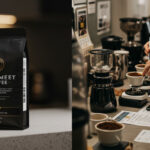
The Timeless Charm of Traditional Coffee: A Nostalgic Brew

Table of Contents
ToggleThe Roots of Traditional Coffee
The Ancient Beginnings: A Ritual Born in Ethiopia
The story of coffee begins in the lush highlands of Ethiopia, where legend has it a goat herder named Kaldi first discovered the energizing effects of coffee beans. Curiosity led to experimentation, and soon, the act of brewing and sipping coffee became a daily ritual. By the 15th century, coffee had spread to the Arabian Peninsula, where it was embraced as a social drink, fostering conversation and community. Here, the seeds of traditional coffee culture were sown, laying the foundation for a timeless tradition that would traverse continents and centuries.
From Sufi Monasteries to Global Tables: The Spread of Coffee
As coffee made its way from Ethiopia to Yemen, it became a staple in Sufi monasteries, where monks used it to stay awake during long nights of prayer. From there, it traveled to the Ottoman Empire, where elaborate coffeehouses became hubs of intellectual exchange. By the 17th century, coffee had reached Europe, where it sparked a wave of innovation in brewing methods. The French press, Italian espresso, and Turkish ibrik all emerged as distinct expressions of this beloved beverage, each reflecting the cultural values and technological advancements of its time.
The Evolution of Brewing: Simplicity Meets Sophistication
Traditional coffee brewing methods have evolved over centuries, balancing simplicity with sophistication. Early methods, like boiling coffee grounds in water, gave way to more refined techniques. For instance:
- The Turkish ibrik introduced the art of simmering finely ground coffee with sugar, creating a thick, aromatic brew.
- The French press, invented in the 19th century, allowed for full immersion brewing, highlighting the coffee’s natural oils and flavors.
- The drip coffee method, popularized in America, became synonymous with convenience and consistency, making it a staple in homes and diners alike.
Each method carries with it a piece of history, a nod to the people and places that shaped its development.
A Daily Ritual: Coffee as a Catalyst for Connection
Beyond its rich history, traditional coffee holds a special place in daily life. Whether it’s the first sip of a morning brew, the comforting warmth of a cup shared with friends, or the quiet moment of reflection over a pour-over, coffee is more than just a drink—it’s a ritual. It’s the thread that weaves together moments of connection, creativity, and contemplation. In every cup, there’s a story waiting to be told, a tradition waiting to be passed on.
Traditional Coffee in American Culture
The Role of Diner-Style Drip Coffee in Americana
There’s something undeniably American about the sight of a steaming, bottomless mug of drip coffee served in a classic diner. This humble beverage has long been a staple of Americana, symbolizing comfort, community, and the everyday rhythm of life. From the bustling diners of the 1950s to the cozy corner cafes of today, diner-style coffee has remained a constant—a simple yet profound ritual that connects people across generations. It’s not just about the caffeine; it’s about the shared moments over a cup, the conversations with strangers, and the sense of belonging it fosters.
Classic Coffee Moments in Film and Literature
Traditional coffee has carved its place in the cultural tapestry of America, often taking center stage in film and literature. Think of the iconic diner scenes in Pulp Fiction, where coffee fuels both conversation and tension, or the quiet, introspective moments in Breakfast at Tiffany’s, where a cup of coffee becomes a symbol of connection. In literature, authors like Jack Kerouac and Raymond Chandler have immortalized coffee as a companion to creativity and contemplation. These moments remind us that coffee is more than a drink—it’s a cultural touchstone that reflects the human experience.
Coffee in Everyday Life
Beyond the silver screen and the printed page, coffee plays a pivotal role in the daily lives of Americans. It’s the fuel that kickstarts mornings, the comfort during late-night study sessions, and the centerpiece of family gatherings. Whether it’s brewing a pot at home or grabbing a cup from the corner coffee shop, these small acts of preparation and enjoyment are deeply ingrained in our routines. Traditional coffee, with its rich aroma and familiar taste, has a way of grounding us, reminding us to pause and savor the simple pleasures of life.
- Morning rituals: Brewing a pot of coffee as the sun rises
- Workplace breaks: Sharing a coffee break with colleagues
- Family traditions: Passing down coffee-making techniques through generations
“Coffee is a language in itself.” – Jackie Chan
Why Traditional Coffee Still Matters
The Comforting Simplicity of a Classic Brew
In a world that often feels chaotic and fast-paced, there’s something profoundly grounding about the simplicity of traditional coffee. Whether it’s the familiar aroma wafting from a morning pot or the gentle warmth of a mug in your hands, a classic brew has a way of slowing time. It’s not about elaborate brewing methods or exotic ingredients—just pure, uncomplicated satisfaction. For many, it’s a ritual that marks the beginning of the day, a moment of calm before the storm of responsibilities takes over.
Think about it: a simple cup of black coffee, brewed just the way you like it, carries a sense of reliability. It’s a constant in a sea of variables, a touchstone of comfort that transcends trends and fads. Whether you’re sipping it at home, in a diner, or at a roadside café, traditional coffee reminds us that sometimes, the simplest pleasures are the most enduring.
How Traditional Coffee Fosters Connection and Community
Traditional coffee has always been more than just a beverage—it’s a social glue that brings people together. From the bustling coffeehouses of yesteryear to the cozy kitchen tables of today, it has long served as a catalyst for conversation and connection. Across cultures and generations, sharing a cup of coffee is a universal gesture of hospitality, friendship, and warmth.
- In diners, it’s the backdrop for heartfelt conversations over the umpteenth refill.
- In homes, it’s the centerpiece of family gatherings and Sunday brunches.
- In workplaces, it’s the fuel that powers collaboration and camaraderie.
This communal aspect of traditional coffee is one of its most enduring qualities. It’s not just about the caffeine—it’s about the shared experience. Whether you’re catching up with an old friend, brainstorming with colleagues, or simply enjoying a quiet moment with a loved one, coffee has a unique way of bridging gaps and forging bonds.
Brewing Traditional Coffee at Home
Step-by-Step Guide to Making a Perfect Cup of Drip Coffee
There’s something deeply comforting about the ritual of brewing a cup of drip coffee. It’s a process that connects us to generations past, a simple yet profound act that transforms humble beans into a steaming, aromatic delight. Here’s how to craft the perfect cup:
- Measure Your Coffee: Use one to two tablespoons of freshly ground coffee for every six ounces of water. Adjust to taste, but remember, balance is key.
- Grind Your Beans: For drip coffee, a medium grind works best. It’s coarse enough to avoid bitterness but fine enough to extract rich flavors.
- Prepare Your Filter: Place a paper or reusable filter in your drip coffee maker. Rinse it with hot water to remove any papery taste and preheat your brewer.
- Add Water: Use fresh, cold water. Pour it into the reservoir, ensuring the amount matches your coffee grounds.
- Brew: Start your coffee maker and let the magic happen. The slow drip process allows the water to extract the full spectrum of flavors from the grounds.
- Serve Immediately: Pour your coffee into a preheated mug to keep it warm. Sip slowly and savor the moment.
Tips for Choosing the Right Beans and Equipment
The heart of a great cup of coffee lies in the beans and the tools you use. Here’s how to make the best choices:
- Select Quality Beans: Opt for freshly roasted, whole-bean coffee. Look for beans with a roast date, and choose a roast level that suits your taste—light for bright, fruity notes, medium for balance, or dark for bold, rich flavors.
- Grind at Home: Invest in a burr grinder for consistent results. Grinding your beans just before brewing ensures maximum freshness and flavor.
- Choose the Right Brewer: A reliable drip coffee maker is essential. Look for one with adjustable settings for brew strength and temperature control to tailor your coffee to perfection.
- Store Beans Properly: Keep your coffee beans in an airtight container away from light, heat, and moisture. Avoid the fridge or freezer, as they can introduce unwanted moisture and odors.
“Coffee is a language in itself.” – Jackie Chan
Brewing traditional coffee at home is more than just a morning routine—it’s a celebration of simplicity, tradition, and the joy of savoring life’s little pleasures. Whether you’re starting your day or pausing for a moment of reflection, a well-brewed cup of drip coffee is a timeless companion.
The Cultural Impact of Coffee Traditions
From bustling cities to quiet villages, coffee has long been a thread woven into the fabric of cultures worldwide. More than just a beverage, it symbolizes hospitality, connection, and heritage—rituals carried forward through generations with reverence. Traditional coffee ceremonies are more than preparation methods; they are acts of storytelling, kinship, and identity.
Coffee Ceremonies Around the World
Every culture embraces coffee with its own unique traditions, infusing the brew with local flavors and meaning:
- Ethiopia: The birthplace of coffee honors it with an elaborate ceremony involving roasting green beans, grinding by hand, and brewing in a jebena (clay pot). The ritual—often accompanied by incense and popcorn—can last hours, symbolizing respect for guests.
- Turkey: Turkish coffee’s thick, unfiltered preparation in a cezve is tied to fortune-telling, where cup readings spark conversation after the last sip.
- Italy: A quick espresso al banco at the bar is a cultural punctuation mark—brief yet essential, blending social energy and tradition in every sip.
- Scandinavia: Fika, the Swedish pause for coffee and pastries, embodies slowing down—a daily practice of warmth in long winters.
Family and the Passing Down of Rituals
Behind every cherished coffee tradition is a family keeping it alive. Whether it’s a grandmother’s precise measurements for café de olla or a father’s morning ritual of grinding beans before dawn, these customs become heirlooms of habit—unspoken lessons in patience, craftsmanship, and togetherness.
“My grandfather always said, ‘Good coffee takes time—just like good company.’ Now, every Sunday, I make his Cuban cafecito the way he taught me: strong, sweet, and shared.” —Maria, Miami
Even in America, diner coffee refills or the “percolator pot at camp” tradition speak to the ways families imprint memories onto the simplest of rituals. The act of passing down these moments is as important as the brew itself.
The Emotional Connection to Traditional Coffee
Why the Aroma of Coffee Evokes Nostalgia
The scent of brewing coffee is more than just an olfactory delight—it’s a time machine. For many, it transports them back to cherished moments: Sunday mornings with family, quiet conversations with loved ones, or the comforting hum of a local diner. The aroma of traditional coffee, with its earthy, robust notes, carries with it a sense of familiarity and warmth that modern coffee variations often struggle to replicate.
This nostalgic power lies in its simplicity. Traditional coffee, whether prepared in a percolator, French press, or simple drip machine, has a timeless quality that connects generations. It’s the same aroma that filled the kitchens of our parents and grandparents, making it a tangible link to the past.
How Traditional Coffee Brings Warmth to Daily Routines
In a world that often feels rushed and disconnected, traditional coffee offers a moment of grounding. Its ritualistic preparation—measuring the grounds, waiting for the brew, and savoring that first sip—creates a sense of calm and intentionality. This daily practice becomes more than just a caffeine fix; it’s a comforting constant in an ever-changing world.
Traditional coffee also fosters connection. Whether it’s sharing a pot with friends over heartfelt conversations or enjoying a quiet cup alone while reflecting on the day, it has a way of making moments feel richer. Its warmth extends beyond the mug, seeping into relationships and daily routines, making even the simplest interactions feel meaningful.
“Coffee is a language in itself.” – Jackie Chan
- It transforms ordinary mornings into cherished rituals.
- It bridges gaps between people, fostering connection and togetherness.
- It reminds us to slow down and appreciate the little things.
Celebrating the Future of Traditional Coffee
As the world races forward with modern innovations, there’s a quiet yet powerful resurgence happening in the world of coffee. Traditional methods, once the backbone of daily rituals and cultural heritage, are finding their way back into the hearts of younger generations. This revival is not just about nostalgia; it’s a celebration of authenticity, craftsmanship, and the timeless allure of a simple, well-brewed cup.
The Rediscovery of Tradition
In a world dominated by espresso machines and single-serve pods, traditional coffee brewing methods are making a triumphant return. Younger coffee enthusiasts are embracing techniques like the French press, pour-over, and even the humble stovetop percolator. These methods, once associated with their grandparents’ kitchens, are now being celebrated for their purity and connection to the craft of coffee making.
This rediscovery isn’t just about taste; it’s about reclaiming a piece of cultural history. From the slow simmer of Turkish coffee to the communal joy of a shared Moka pot, these traditions remind us that coffee is more than a beverage—it’s a ritual, a story, and a moment of connection.
Balancing Modern Trends with Timeless Traditions
While the coffee industry continues to evolve with trends like cold brews, nitro coffee, and latte art, there’s a growing appreciation for the balance between innovation and tradition. Modern coffee culture has brought us incredible variety and creativity, but it’s the rooted simplicity of traditional methods that keeps coffee grounded.
Many coffee shops today proudly offer pour-over stations or Turkish coffee ceremonies alongside their cold brews and cortados. This blend of old and new allows us to honor the past while embracing the future, creating a coffee experience that’s both rich in history and exciting in its possibilities.
Why Traditional Coffee Endures
The enduring appeal of traditional coffee lies in its ability to evoke a sense of comfort and familiarity. It’s the steaming cup that greets us at breakfast, the shared pot at family gatherings, or the warm sip that starts our day. Traditional coffee isn’t just about flavor—it’s about the memories, traditions, and moments it represents.
As we look to the future, it’s clear that traditional coffee will continue to hold a special place in our lives. Whether it’s a drip coffee in a diner, a carefully brewed pour-over, or a frothy cup of Cuban coffee, these methods remind us of the simple pleasures that make life meaningful.
FAQs About Traditional Coffee
What makes traditional coffee methods special? Traditional methods emphasize craft and ritual, allowing for a deeper connection to the coffee-making process and its cultural roots. Are traditional brewing methods time-consuming? Some methods require more time and attention, but many find the process to be a rewarding and meditative experience. Can traditional coffee methods produce high-quality coffee? Absolutely! Traditional methods like pour-over or French press can highlight the nuanced flavors of high-quality beans.
As we celebrate the future of traditional coffee, let’s raise a cup to the methods that have stood the test of time. Here’s to the rituals, the stories, and the timeless joy of a perfect brew.
is a writer and editor at Coffee With Finance, blending her love for coffee, personal finance, and visual storytelling. She crafts engaging articles, curates site images, and shares brewing tips, bean origins, and practical money advice. Anna believes that managing finances, like making great coffee, should be intentional and rewarding — bringing clarity, warmth, and beauty to every story she tells.


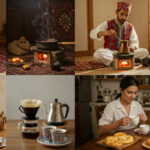










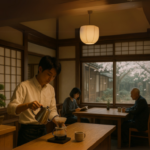




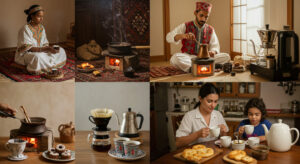



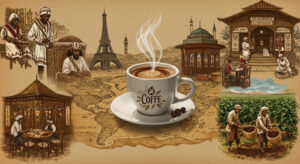

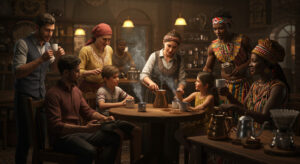


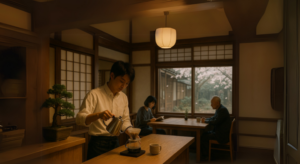
Post Comment